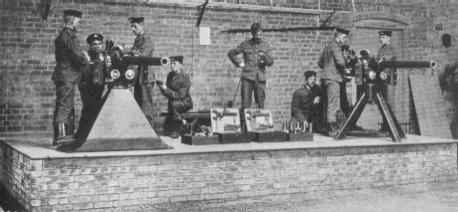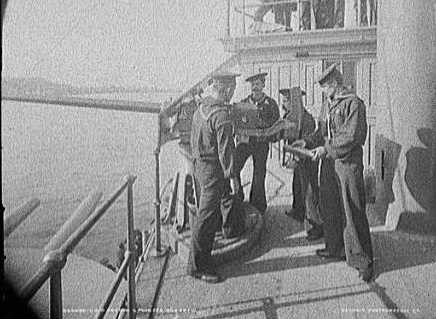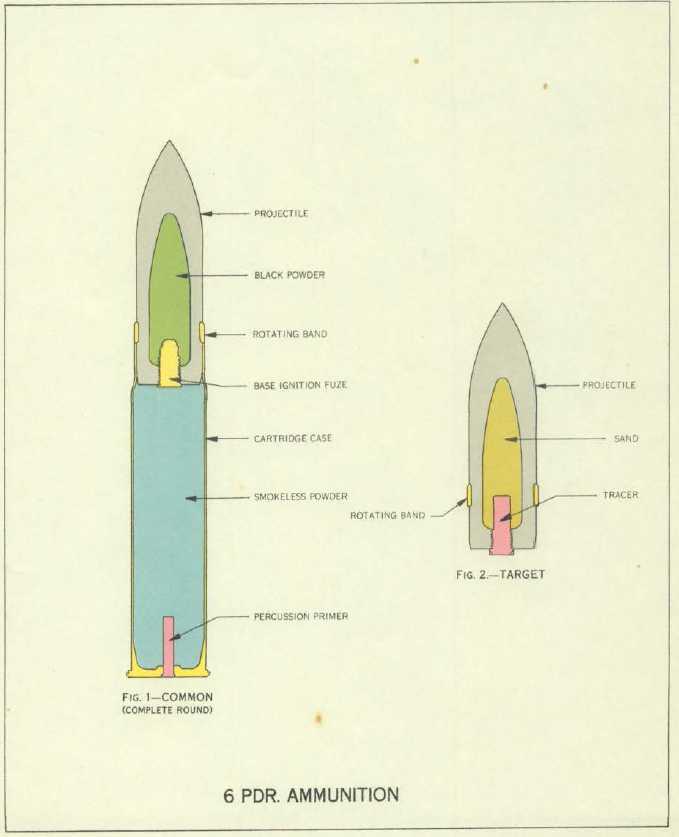|
The 1, 3 and 6-pdr guns of the "New Navy" corresponded to certain calibers, respectively 37 mm (1.46"), 47 mm (1.85") and 57 mm (2.24"). The 1-pdr was the smallest explosive shell allowed under the Rules of War as formalized in the late 19th century. The early guns of this type were purchased from the French firm of Hotchkiss and were introduced in the 1880s as a secondary weapon on larger vessels for defense against torpedo boat attacks. Later weapons were manufactured by Driggs-Schroeder and design control was asserted by the United States. The designations of these weapons in US service at first corresponded to those given by their individual manufacturers, but the US Navy later applied their own series of Mark numbers which were based upon when the gun entered service. All of these guns were rapidly made obsolete by the rapid progress of torpedo weapons during the late 19th and early 20th centuries, which necessitated the use of larger-caliber guns to defend against torpedo attacks, but the start of World War I brought many of them back into service to arm small craft. During World War II these guns were in the three Hawk class (AM-133) minesweepers and in such minor vessels as US Coast Guard cutters, converted yachts and Coastal Picket patrol craft. The following notes apply only to the 6-pdr weapons: Most guns were of built-up construction, but later ones featured monobloc barrels. The original Mark 1 gun had a barrel and short jacket with a locking hoop screwed to the front of the jacket. Mark 2 was similar but did not have trunnions. Mark 3 was the Hotchkiss Mark 1 (long). Mark 4 was a Driggs-Schroeder monobloc field gun with a revolving drop breech block. Mark 5 was a Lynch field gun. Mark 6 was the Driggs-Schroeder rapid-fire Mark 1 gun. Mark 7 was the Hotchkiss Mark 2 (long). Mark 8 was the Driggs-Schroeder Mark 2. Mark 9 was the Maxim semi-automatic Mark 2 gun of monobloc construction with a vertical sliding breech-block. Mark 10 was the Nordenfeldt rapid fire Mark 2, similar in construction to the Mark 9. Mark 11 is undefined. Mark 12 was a Davis non-recoil gun. Mark 13 was a Davis non-recoil gun bored out to take a 9-pdr. (4 kg) projectile. A gun list of 1901 shows 735 guns in service. The data below applies to the 40 caliber Hotchkiss guns except where otherwise noted. |

British 6-pdr Hotchkiss QF
|

Maxim-Nordenfelt 6-pdr modified into a
saluting gun
|

6-pdr. aboard USS Oregon around 1898
|

Cutaway sketch of 6-pdr ammunition |